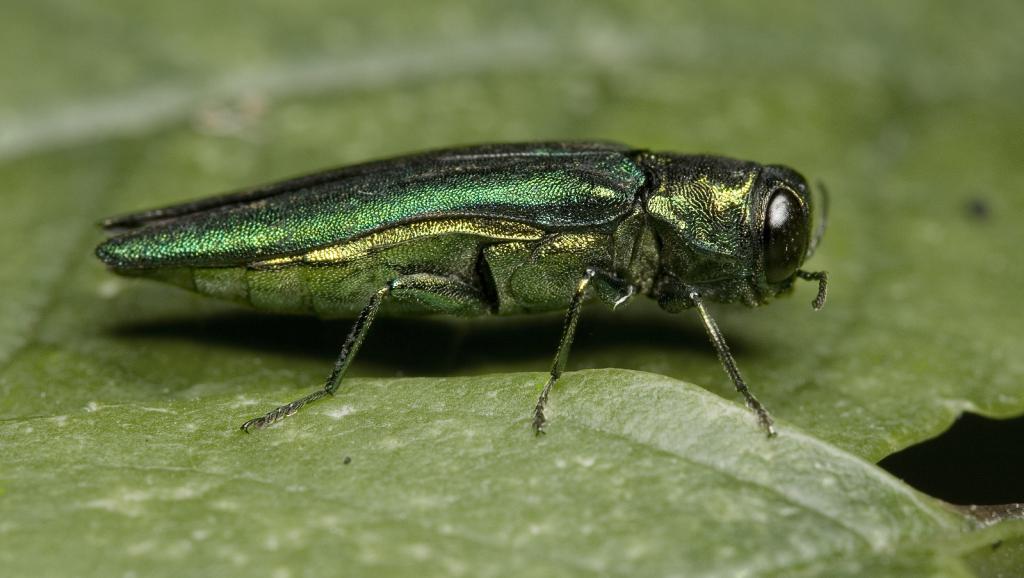Invasive Species Alert! – Emerald Ash Borer
by Scott Harris, August 2025
IAE is on the leading edge of monitoring the spread and studying the potential impacts that an aggressive non-native beetle will have on ash-dominated riparian forests.
The emerald ash borer (“EAB”, Agrilus planipennis) has killed an estimated 100 million ash trees in North America. The first confirmed observation of EAB on the west coast of the U.S. was in Forest Grove, Oregon in June 2022. Since then EAB has been observed at additional sites in Marion, Clackamas, Washington, and Yamhill Counties, including a site that IAE has been monitoring. To see where EAB has spread and the constellation of detection traps set up by the Oregon Department of Forestry and many partners, click here. IAE is participating in a statewide workgroup tasked with slowing the spread of EAB (called SLAM – Slow Ash Mortality) and to develop mitigation measures.

IAE has been partnering with the Bureau of Land Management to monitor for EAB on their lands and also study the role of ash in riparian forests. Oregon ash (Fraxinus latifolius) is a keystone species in these ecosystems, and based on lessons learned from the east coast of the U.S., it is likely that many of these ash tree will die once EAB has arrived. Our work is collecting baseline data on the pre-invasion plant community. If EAB kills ash trees, then we will return to study the impacts of the removal of those species and potentially recommend measures to maintain ecosystem functions in riparian forests.
